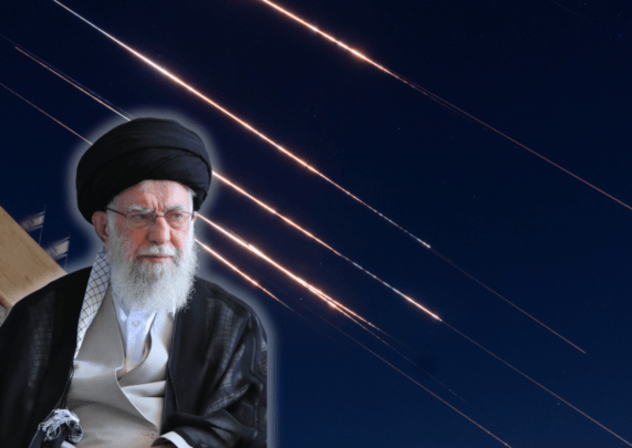Iran's Final Confession: A Pathetic Spectacle of Weakness, Lies, and an Invincible Bomb

For years, the world has engaged in a tired, cyclical debate over the intentions of the Islamic Republic of Iran. We have been asked to parse the regime’s statements, to trust its flimsy assurances, and to believe in the absurd fiction of a purely “peaceful” nuclear program. That era is definitively over. In a stunning confluence of events, the clerical regime in Tehran has ceased its attempts at sophisticated deception and has instead offered the world a full, unvarnished confession—not in words, but in a series of undeniable, catastrophic actions that reveal the terrifying truth.
This is not an interpretation or an intelligence assessment. This is a public record of failure, deceit, and weakness, authored by the regime itself. They have confessed to building a militarized, clandestine nuclear weapons program. They have confessed that its core is now immune to conventional attack. And most damningly, they have confessed to being a weak, paranoid, and brittle power, lashing out as it crumbles from within.
The first article of this confession was delivered with the blunt force of a slammed door. The regime’s on-the-record confirmation that it has banned the Director-General of the International Atomic Energy Agency (IAEA) and ripped out international surveillance cameras from its nuclear sites is not a diplomatic maneuver; it is the act of a criminal scrubbing a crime scene. The pretext offered—a laughable claim about preventing Israeli intelligence gathering—is an insult to the world’s intelligence. A regime with nothing to hide does not blind the world’s inspectors. It does not create a black hole of information around its most sensitive facilities. This is an overt, panicked act of concealment, a final admission that the “peaceful program” narrative was always a lie, and that what is happening in the darkness of its undeclared sites cannot withstand the faintest glimmer of light.
Hot on the heels of this brazen obstruction came the second, chilling article of confession, delivered not from Tehran, but from the highest echelons of the U.S. military. The Chairman of the Joint Chiefs of Staff publicly confirmed what was once a subject of fearful speculation: Iran’s Isfahan facility, the fortified heart of its enrichment enterprise, is buried too deep for America’s most powerful bunker-buster bombs. Let this sink in. The regime has successfully created an untouchable nuclear core. The threat is no longer a matter of “breakout times” that can be reset by military strikes. It has become a permanent, hardened reality. Through years of duplicity and delay, Tehran has successfully moved the goalposts beyond the reach of conventional deterrence, ensuring its path to a bomb is now shielded by thousands of feet of rock and earth—a fortress for Armageddon.
But it was the regime’s own grotesque pageantry that provided the most damning piece of evidence. The massive, televised state funeral, a joint spectacle of grief for top IRGC commanders, ballistic missile chiefs, and nuclear scientists, served as the third article of confession. In their hubris, they brought all the pieces together for the world to see. There, in one funereal procession, was the irrefutable fusion of the three elements of a nuclear weapons program: the military masters (IRGC), the delivery system (missile program chiefs), and the warhead architects (nuclear scientists). This spectacle single-handedly demolished the foundational lie of a civilian program. It was a macabre parade that screamed the truth they had spent decades denying: the program is, and always has been, military to its core.
The final article of confession is one of profound, pathetic weakness. The decision to parade a visibly injured Ali Shamkhani, a top aide to the Supreme Leader, on state television was a desperate act of information control that backfired spectacularly. Forced to quell rumors of his death after a precision strike, the regime instead provided proof of its vulnerability. The sight of a senior official, propped up with a walking stick and struggling with a breathing aid, was not a display of resilience; it was a confirmation that the regime’s inner sanctum can be pierced. This exposure has fueled a state of intense paranoia, manifesting in the so-called “season of traitor-killing”—a vicious domestic crackdown where citizens are summarily executed on flimsy accusations of spying. A strong, confident state does not behave this way. This is the behavior of a weak, terrified entity, one whose claims of victory are publicly mocked by world leaders and whose grip on power is so tenuous it must turn on its own people in a desperate search for internal enemies.
The confession is complete. The regime is lying and hiding its program (IAEA ban). The program is unstoppable by conventional means (Isfahan). The program is explicitly for military purposes (the funeral). And the leadership is a weak, paranoid, and delusional cabal presiding over a state of chaos (Shamkhani’s appearance, the internal purges). The veil has not just been lifted; it has been torn to shreds by the regime itself. We are now faced with the most dangerous scenario imaginable: an untouchable nuclear weapons program in the hands of unstable fanatics who have confessed, through their own actions, that they are too weak and irrational to be trusted with it.

